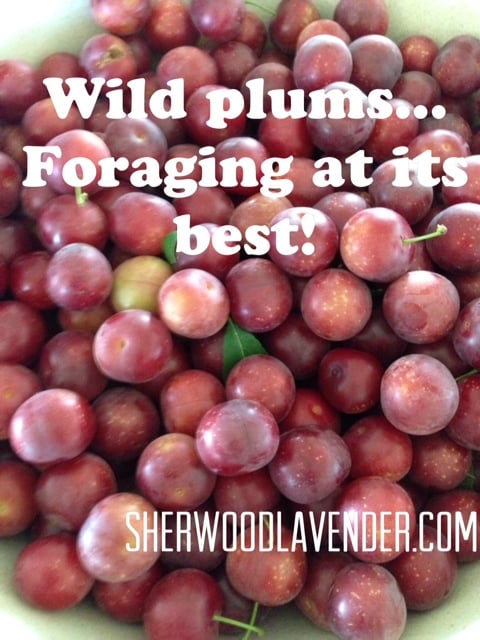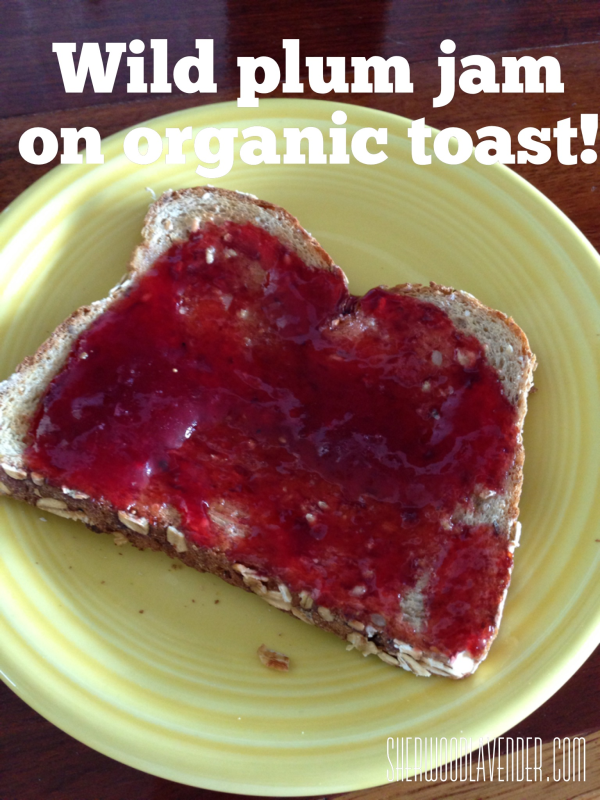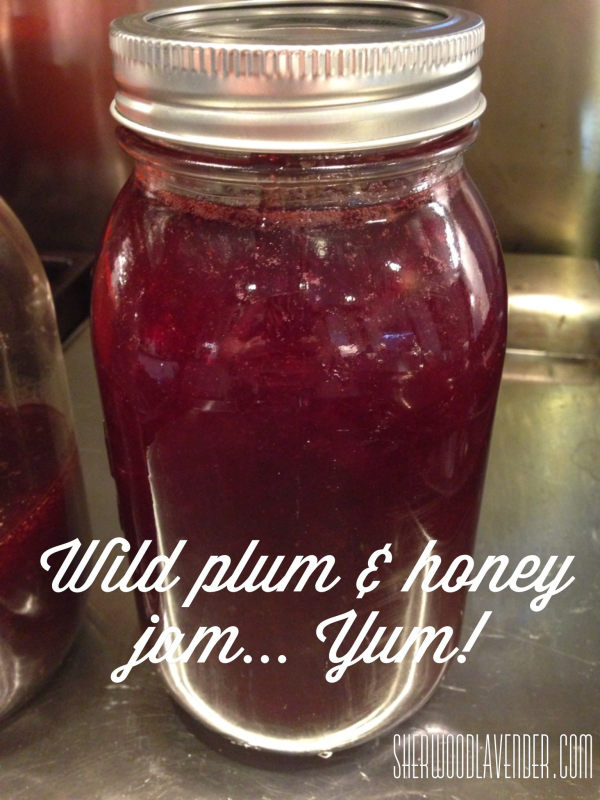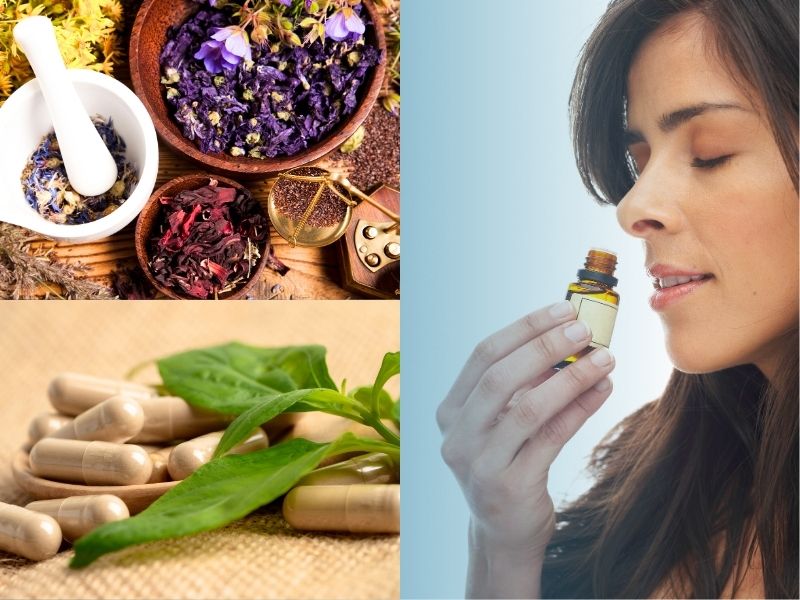I grew up on a small island off the coast of New Zealand where stores were scarce and, in our case, so was money. So I grew up foraging and wildcrafting! I didn’t think anything of it, after all when nature handed you presents, you’d be nuts to ignore them! (And we often found nuts!) As well as having a big vegetable garden and lots of fruit trees of our own, we foraged for berries, fruit, nuts, herbs, wild greens, shellfish, mushrooms, and more! So, just as the saying goes, you can take the girl out of kiwi-land but you can’t take the kiwi out of the girl; I have continued my foraging ways over here in the States!
Now I live on our 45 acre farm in Sherwood (feel free to visit us at SherwoodLavender.com), just south of Portland, in Oregon, where we have a sustainable mix of lavender (for essential oil production), chickens (for eggs), bees (for honey), a small mixed orchard, Douglas fir (for firewood and future timber), rescue horses (for manure for compost), a rescued alpaca (for fiber and manure), rescue cats (for rodent control), a rescued chihuahua (for entertainment), and lots of gardens for herbs, flowers, inspiration, and vegetables! It’s a wonderful synergy, and we feel blessed every day to be here. Ok, so I have less hammock time than I’d like, but it’s worth it! Luckily my job at ACHS ties nicely into my homestead style of living—I’m always up to something on the farm, whether it’s distilling, making tinctures, making essential oil blends to keep flies off the horses, using raw honey for facemasks, or foraging (wildcrafting) food and herbs! Luckily, here in Oregon there are lots of lovely choices, particularly this time of year! And we love having students up to visit for workshops and helping us tend the lavender!
Since so many of my friends are intrigued by my antics, I thought it might be worth a blog post or two to share what I’m up to, in the spirit of homesteading, or being frugal, or eating local, or eating paleo, or all of that rolled into one!
Since I LOVE foraging, imagine my delight to discover a wild plum tree hiding behind my new compost pile this year! (It’s a big compost pile!) I think because the compost pile was in the way, a sprout that was already there was allowed to grow as I couldn’t get the tractor close enough to mow, so we have a lovely pile of wild plums! It looked like something had stripped some of the lower branches (maybe our suspected black bear?) but there were still plenty left to eat fresh and make jam!

Wild plums have been a treat since the first homesteaders were roaming our mountain, so it’s great to feel like pioneers as we harvest nature’s bounty! And it gives us a rest from the attack of the killer blackberry bushes— blackberries are our go-to foraging food this time of year, but this year they seem to be on the warpath and we’ve been shredded picking blackberries!
Wild plums are about the size of bing cherries, and come in yellow and red skinned varieties. Ours have yellow centers. They taste like plums! Ensure you identify anything you forage correctly. Ask a local expert or there are lots of pictures of various types of wild plums online!
Wild plums are delicious raw, but there were simply too many to eat, and I LOVE to make jam, especially wild blackberry jam. There is nothing like making jam from food you wildcraft, and since our no-spray organic approach leaves us with quite a few blackberries, and now wild plums, what better than to harvest them and turn them into pure deliciousness! “Free” jam eaten in the dead of winter really lightens the heart!
This year I decided to experiment with honey jam. We have three bee hives, all naturally kept, and have a big jar of honey from last year that’s now crystallized that I’m using in baking and cooking. But there’s only so many muffins made with honey we can eat, no matter how delicious they are! The honey adds a depth of flavor to the plum jam that is different than sugar. We all liked it, particularly since we know that honey is nature’s natural sweetener! Always buy your honey from a local, chemical-free beekeeper if you can. Don’t buy imported honey—Chinese honey is now banned but sneaks in under labels from countries like India and has been found to be contaminated with lead. Ick. And yes folks, there really is a “honey gate” (click for more info!)! Just another reason to know your farmer! Or keep a hive! (It’s much easier than you think if you follow natural permaculture/biodynamic based beekeeping like we do—but that’s for another blog!)
So back to the jam: I googled around for some different wild plum jam recipes and they all called for citric acid and pectin—things I didn’t have since the pectin I found buried in my canning supplies cupboard was not only expired, but was chock full of chemicals! I don’t want to make home made jams just to add the chemicals that the big nasty industrial food companies use!!! Seriously!!!
So after disgustedly throwing that package of pectin in the trash, I just improvised on my grandmother’s basic jam recipe, which calls for equal quantities of stewed fruit and sweetener, brought to the boil and simmered for 15 minutes, then put into piping hot jars from the oven. Since I make small batches, I put them in the refrigerator. If making larger batches, you can pressure or boiling water can them to render them safe for long term storage.
Wild Plum and Honey Jam
- 3 cups stewed plums, strained to remove skins and seeds—I used my food mill, which got jammed up with the seeds and had to be cleaned out, but still did a pretty good job. (Please do let me know in the comments how you get the seeds and pits out of your plums?)
- 3 cups honey
- 2 quart size canning jars (or some variation thereof)
Run your jars through the dishwasher. Always use jars with two-piece lids. There are new lids and seals you can buy that are BPA free and reusable. I haven’t found any yet, but my jam never touches the lid or seal so I try not to stress out too much.
Place clean jars into the oven at 200 F to keep them warm while your jam cooks. You’ll need a special pair of jar tongs to handle your hot jars (available where canning supplies are sold) or a good oven glove!
Place honey and plum puree in a large non-reactive pot. Bring to a simmer and then simmer for 15 minutes. You can test when it’s done by placing a scant teaspoon of jam into the freezer for 2-3 minutes—if it gels up, you should be good to go. If you boil it too long it tastes funny, and too little means it won’t set up, so it’s a bit of a balancing act but even runny jam is delish!
Using canning tongs, bring your jars out one at a time and fill with hot jam (I like to use a silicon funnel), putting the lid on each one before bringing the next one out. I reuse rings, but do not reuse the metal lid unless you have the special ones that are made to be reused.
Keep in the refrigerator or freezer or process further in a water bath or pressure canner to keep in the pantry!
Yum! Enjoy on toast, scones, or anywhere you’d use jam! And do let me know what your favorite jam is!

A Note About Food Preserving and Processing Guides from the USDA
It turns out the way I was taught to make jam by my grandmother is not quite up to snuff anymore. While I don’t think there’s much botulism floating around my very clean kitchen (hey – I’m a virgo!), better safe than sorry!!!! Note that this is the 2009 version, which has updated a lot of the recommendations for canning and preserving.
Here’s the link to the USDA guide to jams and jellies: http://nchfp.uga.edu/publications/usda/GUIDE%207%20Home%20Can.pdf
And to food preserving overall: http://nchfp.uga.edu/publications/publications_usda.html



